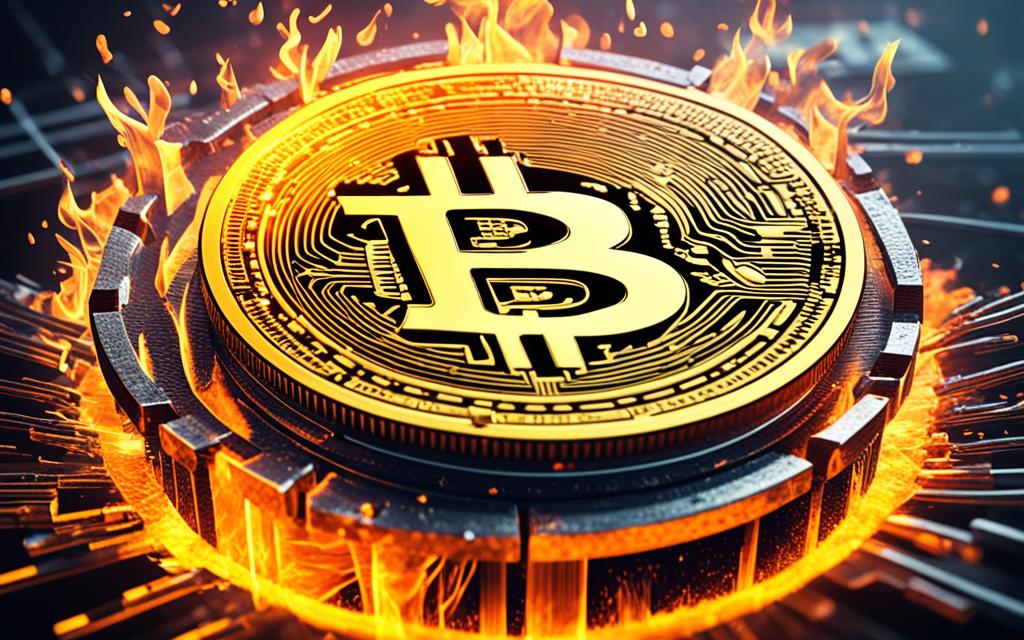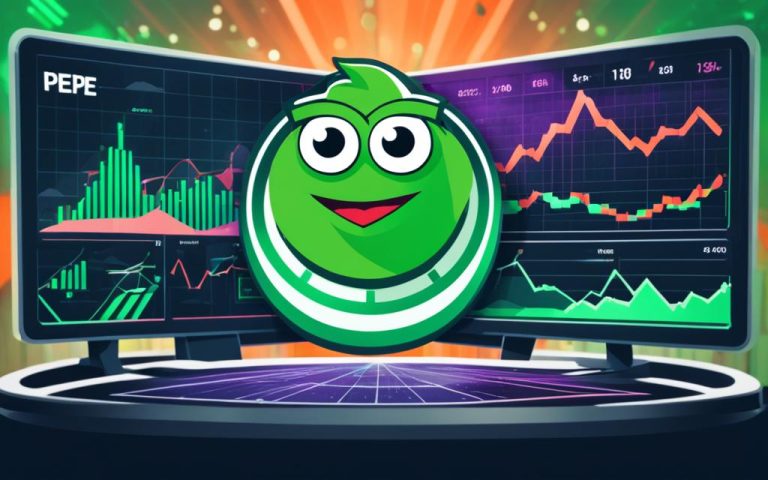Burning crypto is a key process in the cryptocurrency world. It’s a tactic to permanently take a set number of tokens out of use. These tokens are moved to an address where they can’t be accessed. But why is this done in the digital asset realm?
The main aim of burning crypto is to lessen the total number of tokens available. This makes the remaining tokens more valuable. Just like when a company buys its own shares back to boost their worth, token burning can help keep a cryptocurrency’s price steady.
With fewer tokens available, their value may go up. As the idea goes in economics, lowering the supply usually makes the demand rise. So, token holders may see better profits as their tokens become more valuable due to burn events.
For those involved in staking, burning tokens can be quite helpful. Those who validate transactions through proof-of-stake methods can see more rewards. This is thanks to the lower number of tokens available after burning.
Burning doesn’t happen just once. Some projects do it regularly to show they are serious about making their tokens a valuable asset over time. Such moves attract more interest from the cryptocurrency community.
One great thing about burning crypto is the control it offers over the number of digital assets. By reducing the available tokens deliberately, developers can balance inflationary pressures. This helps in ensuring their cryptocurrencies grow steadily and remain stable.
In the end, burning crypto is a strategy used by many in the cryptocurrency space. It’s aimed at managing supply, making tokens more scarce, and enhancing their value. This approach signals a dedication to the success and interests of investors, creating a win-win situation for all.
How Does Burning Crypto Work?
Burning crypto removes tokens from circulation. This action makes the cryptocurrency more scarce. The scarcity and reduced supply can impact its value. So, stories behind how crypto is burnt are key to learn.
Investigate the details. When a cryptocurrency is burned, it moves to a unique wallet. This wallet can only receive tokens but not send them out. Thus, access to these tokens is lost forever.
It’s a legitimate way to prove tokens are out of circulation. This process is important for showing that a project is working to reduce its supply. In turn, this can make the remaining tokens more valuable.
“Burning crypto involves sending tokens to a burner address, permanently removing them from circulation.”
Projects have options when burning their tokens. They can manually get tokens off the market. Or, they can set up systems where transactions automatically burn a few tokens.
This automated approach ensures a steady decline in token numbers. It can be more systemic than manual burning. Whichever way is chosen, the goal is the same: make the cryptocurrency more valuable through scarcity.
Automated Burning Mechanisms
Some blockchains include automatic burning features. For instance, Ethereum’s “gas fees” burn tokens. These fees disappear from the supply with every transaction.
When a cryptocurrency’s supply decreases, its rarity rises. In economic terms, this should improve its value. Thus, burning crypto operates on the core of economic principles.
An example portrays how burning can work:
Imagine Company XYZ burns 10% of its tokens. With fewer tokens available, there’s more demand for what’s left. As demand rises and supply falls, the token’s value might increase.
Such strategies aim to make cryptocurrencies more attractive. They want to motivate current holders and draw in new ones. By making tokens scarcer, these projects hope to better their value.
Reasons for Burning Crypto
Crypto projects burn their tokens for various reasons. One key goal is to boost demand and value. By lowering the total number of tokens available, each token becomes rarer and more valuable. This can draw in more investors wanting to buy.
Burning crypto can also happen to meet a certain mining condition, like proof-of-burn. Here, miners burn tokens to mine. This process removes extra tokens and prevents certain attacks on the network. It also keeps inflation in check by adjusting the currency’s supply and value.
Other projects burn tokens to keep the market flowing and to show they’re serious about keeping tokens scarce. This strategy can lead to more trust from investors. In the end, burning crypto is a smart move to up the coin’s value and attract interest.
FAQ
What is burning crypto?
Burning crypto means taking some tokens out forever. They are sent to a burn address. Once there, they can’t come back.
Why do crypto projects choose to burn their tokens?
Crypto projects burn tokens to lower the supply. This can make tokens more wanted and valuable. It also fits some rules, like proof-of-burn, for miners.
It requires miners to burn tokens for mining rights.
How does burning crypto work?
To burn crypto, tokens are sent to a special address that can only hold them, not send them. Because the keys are in an ‘inaccessible wallet’, the tokens can’t be used again.
Does burning crypto benefit stakeholders?
Yes, stakeholders in proof-of-stake setups may see benefits. With fewer tokens around, the ones left can rise in value.
What are the reasons to burn crypto tokens?
Burning tokens reduces a cryptocurrency’s amount. This makes it rarer and possibly more valuable. It can also prevent spam, make the network safer, and control inflation.
Burning tokens shows commitment to keeping them scarce. This can make investors trust the project more.
How can burning crypto be automated?
Fee-charging transactions is one way to automate burning. The collected fees are then used to burn tokens. Some blockchains do this burning automatically, too.



















